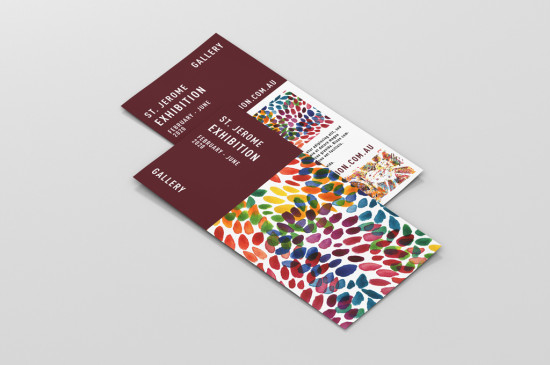 DL Flyers & Leaflets
DL Flyers & Leaflets
DL flyers are a great size for the price. They're ideal for letterboxing, menus, special offers, tear-off coupons, event flyers and business brochures. A lot of brochure holders are DL size too, so it’s perfect if your flyers need to be on display.
DL flyer dimensions are 99mm x 210mm, so three of them fit side by side on an A4 sheet. That means as well as being cost effective, there’s room for decent sized photos and detailed information.
We only print on premium stock – gloss, matt and 100% recycled – from paper through to card. This means you can print a low cost flyer for a mailout or countertop, or a double sided DL card that fully represents your business brand.
Printing starts at just $86 including GST and delivery for 100 DL fliers, full colour single sided. Because of printing setup costs though, a print run of 1000 or more makes the per unit cost cheaper. For 5000 or 10000 A6 flyers it’s even better!
Portrait or landscape
Portrait or landscape orientation has its origin in visual art, referring to the ratio of dimensions used when painting a portrait of a person’s head and shoulders, or for a picture incorporating a built or natural landscape.
Portrait means the DL flier design is vertical, 99mm wide by 210mm deep. DL landscape is on its side, 210mm wide x 99mm deep. This is relevant when thinking about how it will be held and what paper is best to use.
Printed pages
Printers and designers often speak of booklets and brochures having a certain number of printed pages or ‘pp’. 1pp DL means printing on one side of a sheet of DL paper or card. 2pp DL is printing on both sides of a DL sheet. With fliers though, we often just say single sided or double sided printing.
Paper types
Paper (or paper stock) used in commercial printing has a language all its own. The weight of paper is measured in gsm, or grams per square metre. As a guide, copy paper is 80gsm, gloss or matt flier paper commonly starts at 115gsm and business cards are printed on 300gsm to 350gsm paper referred to as card stock or board.
You may have heard about coated and uncoated paper. That doesn’t refer to laminating or celloglazing, but how the paper is manufactured.
Uncoated stock is paper in its natural state. The tiny gaps between the fibres mean it is more porous, will absorb more ink and has a slightly rough feel. When it is printed, edges are softer and colours not quite as vivid, but it has a welcoming look and feel and is a great match for the right business brands. Most (but not all) 100% recycled stock is uncoated.
Coated stock is produced by filling the gaps between the paper fibres with chalk or china clay and natural or synthetic binders. The paper is then calendered – pressed between rollers – to smooth the surface. Coated stock is therefore less absorbent to ink, making printed colours brighter and detail crisper. When a paper is described as gloss, matt, satin or silk, this means it is coated.
The same weight uncoated paper often seems heavier than a coated stock, so it is a good idea to look at samples, or ask your printer or designer’s advice on choosing the right stock for your purpose.
Both coated and uncoated stock can be given further finishes such as celloglazing, laminating or spot UV varnish. It is often easier to write on uncoated stock if you’re getting a form printed but coated stock can be more resistant to moisture and dirt.
Full colour
Full colour printing is a lot more economical and available in smaller quantities than it used to be. This is largely due to technological advances and digital printing. The inks used in full colour printing haven’t changed, though.
The term ‘CMYK’ is often thrown around by printers and designers. This stands for four inks – cyan, magenta, black and yellow – that are used to produce full colour printing. It is very important that artwork and images used in full colour printing are set to CMYK.
RGB or Red Green Blue is the colourspace of your computer and device screens and is used for digital artwork. RGB images printed in CMYK look a bit dull and washed out. That’s one of the reasons, if you’re supplying artwork for printing, it’s important to read our setup guide.
DL flyer design
Whether you use a corporate style or are looking for a new or updated look, talk to our graphic designers about your business and promotional requirements. Their experience and creative nous will make sure you get a great result and fast turnaround at a very reasonable price.
If you’re sending artwork for printing, check out our artwork setup guide to make sure it’s print-ready.
Order online today or call now to discuss your DL flyer print and design requirements.


